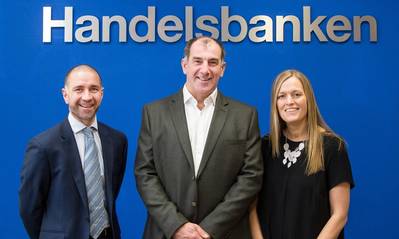Ecosse Subsea Services (ESS) has agreed a multi-million-dollar revolving credit facility with Handelsbanken.
The new relationship will support the Banchory-based subsea engineering specialist as it tenders for larger renewables and power generation contracts.
With its roots in the oil and gas industry, ESS has led the way in adapting traditional technologies for use in the renewables and interconnector sectors and has designed and patented a range of tools which are used in seabed clearance, route preparation, trenching, backfill, pipelay removal and cable laying operations.
The company said it was also encouraged by signs of recovery in the oil and gas sector and predicted that technologies developed by ESS for renewables projects would prove equally attractive for deployment on major oil and gas projects.
The company’s SCAR Seabed System has been deployed on a number of UK and European renewables projects, including Westermost Rough, Race Bank and Wikinger offshore wind farms and on cable trenching operations on a major interconnector programme in the Moray Firth.
To sustain growth, ESS required a banking relationship which provided performance bonds and guarantees to its clients and Handelsbanken’s Aberdeen branch stepped in to offer full banking services, including a multi-million-pound revolving credit and bonds and guarantee facility.
ESS managing director, Mike Wilson, said: “Until now Ecosse has been self-financing but our track-record for completing high-value and complex subsea contracts, means we need a more rounded banking service. As we win larger contracts, our clients require us to have a more sophisticated banking facility and we are delighted to partner with Handelsbanken who have been supportive and flexible in their offering.”
ESS recently received an Engineering Excellence Award at the Scottish Green Energy Awards and has been supported by Scottish Enterprise and part funded by the European Structural and Investment Funds Programme to develop SCARJet, a water jetting tool which has the potential to double trench production rates in softer seabed trenching operations.








